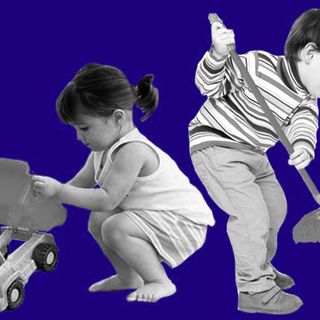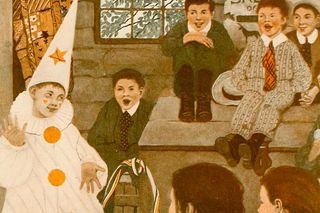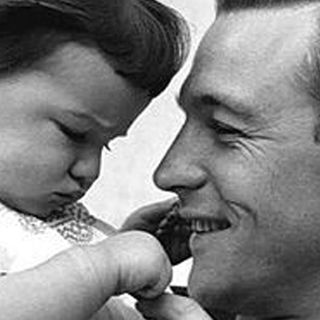
Labeling Kids ‘Class Clowns’ Creates a Self‑Fulfilling Prophesy
The negative stigma can be formative.

Every classroom has one: The Class Clown. The jokester who’s out to create some disruption in the class. Often seen as troublemakers, they don’t, in fact, start out intending trouble.
Class clown behavior goes back to the formative years of 5 to 7, when kids are especially energetic and playful. Playful kids — most often, boys — can typically be described as bright, energetic, curious, aggressive, cheerful and mischievous; in classrooms, they’re often the ones humming or laughing, writes Lynn Barnett, of the University of Illinois at Urbana–Champaign in the US, in a study of class clown behavior.
Her research shows that kids start school without any prejudice toward playful behavior. In fact, in first grade, children consider playful boys — class clowns — to be socially adept and popular. The boys also had a good self-image.
“But teachers often perceive playful kids to be troublemakers — intentionally negative disruptors. Students who exhibit ‘clowning’ behavior are labeled ‘problematic’ by their teacher because they require that a disproportionate amount of time and attention be devoted to them.” Barnett writes.
Perhaps this is understandable — after all, teachers have many students to manage and lessons to get through — but the problem is, Barnett has found, teachers’ negative attitudes toward playful boys create a self-fulfilling prophesy of negative behavior and negative response.
After being repeatedly reprimanded by their teachers over time, by around third grade, playful boys labeled as the class clown had gained a reputation contradictory to their original popularity. Where once they were considered socially skilled and fun, peers now deemed them more of a menace, adopting the attitudes expressed by teachers.
Faced with negative attitudes from both the authority figure as well as from classmates, playful children often became more alienated and withdrawn. Ironically, this leads them to become more aggressive and disruptive in class, acting out against their stigma — thus creating a repetitive cycle of disruptive behavior, followed by condemnation and punishment, leading to more aggressive and negatively disruptive behavior.
The Class Clown, initially playful and well-intentioned, takes on the aggression the authority figure mistakenly assumed in the first place.
“Known as the ‘Pygmalion Effect’ […] in educational research, it has been shown that teachers may form initial expectations for a student, and they then behave toward the student in accord with their expectations,” Barnett writes. “In turn, students respond to the ways in which they are treated by teachers, and ultimately they may internalize these expectations, with the result that a self-fulfilling prophecy is evinced.”
This social stigmatization of playful boys at an early age can have a long term impact on their personality and the way they see themselves, Barnett reports. As they grow up, and the cycle continues, the negative connotations of a class clown label can inhibit a child’s social and academic growth.
Barnett’s study focused only on American children; it’s unclear whether a playful child in India, with a different cultural upbringing that places more emphasis on community and authority, would respond to a class clown stigma with aggression, or conformity. Regardless, alienating children into compliant behavior doesn’t seem like a healthy or sustainable practice.
What we can take away from this study is that there seems to be a window during class 1 when teachers can respond in a way that recognizes boys’ playful energy as a skill, rather than a negative trait, and fosters that behavior into more positive outlets and actions. After all, play is how all young children — not just class clowns — learn new skills and knowledge.
Related:
Angelina Shah is a staff writer with The Swaddle. In her previous life she was a copywriter in advertising. She has a penchant for reading, singing, travelling and being obsessed with superheroes.
Related


The Buzz Cut: Claire Foy Gets a Royal Apology over Unequal Pay
